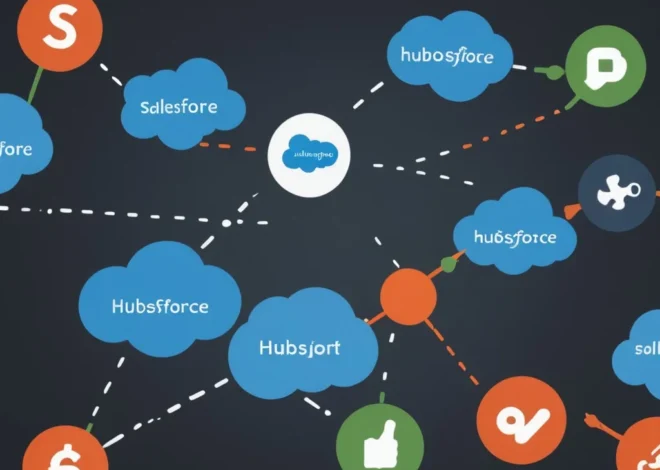
30 Salesforce Admin Interview Questions & Answers

Master Your Salesforce Admin Interview: 30 Common Questions and Expert Answers
Landing a Salesforce Admin position is an exciting career move. However, conquering the interview can be a challenge. To assist you in your journey to success, we’ve compiled a list of 30 frequently asked SF Admin interview questions, each accompanied by expert answers. Whether you’re a seasoned professional or new to the world of Salesforce, this guide will ensure you’re well-prepared to shine during your interview.
1. What is Salesforce, and how does it work?
Answer: SF is a cloud-based tool that helps businesses manage customer information, streamline processes, and improve customer relationships. It operates online, making data accessible from anywhere.
2. What are profiles and roles in Salesforce?
Answer: Profiles determine what actions a user can perform, while roles govern who they can view in SF.
3. Explain the difference between roles and profiles.
Answer: Profiles control permissions and feature access, while roles manage record-level access.
4. What is a workflow rule in Salesforce?
Answer: A workflow rule automates tasks, such as sending emails or updating data, when specific conditions are met.
5. How do you keep data secure in Salesforce?
Answer: Data security in SF is enforced through profiles, roles, sharing rules, and permission sets. These mechanisms regulate data access and permissions.
6. What’s a junction object in Salesforce, and why use it?
Answer: A junction object links two objects in a many-to-many relationship, which is valuable when you need to connect records between objects.
7. Explain the role of a role hierarchy and sharing rules.
Answer: The hierarchy defines the order of sharing records, while sharing rules open up access that the hierarchy doesn’t cover.
8. How is a workflow rule different from a process builder?
Answer: Workflow rules automate simple tasks, while the Process Builder handles more complex automation.
9. How can you prevent duplicate records in Salesforce?
Answer: Use validation rules, duplicate rules, and matching rules to prevent duplicates.
10. What’s the difference between master-detail and lookup relationships?
Answer: Master-detail relationships create parent-child connections, while lookup relationships are more independent.
11. What’s the purpose of a validation rule in Salesforce?
Answer: Validation rules ensure data entered meets specific criteria before being saved.
12. How can you schedule a report to be emailed in Salesforce?
Answer: Set up a report schedule to send it via email.
13. What’s a custom object, and when do you use it?
Answer: A custom object stores unique data. Use it when you need to track specific information not covered by standard objects.
14. How do you secure sensitive data in Salesforce?
Answer: Use encryption, data masking, and permission sets to protect sensitive data.
15. Can you elucidate the difference between a public group and a queue?
Answer: A public group is a collection of users, while a queue is a group of users who work together on specific records.
16. How do roles relate to data access in Salesforce?
Answer: Roles control record-level access. Higher roles access more records, while lower roles access fewer.
17. How do you import data into Salesforce?
Answer: Use data import wizards, data loader, or the Import Wizard.
18. What’s the purpose of the Data Loader in Salesforce?
Answer: The Data Loader allows you to efficiently import, export, and update data in bulk.
19. What’s the difference between a trigger and a workflow?
Answer: Triggers are code that run based on data changes, while workflows automate simple tasks.
20. How do you maintain data quality in Salesforce?
Answer: Use validation rules, duplicate management, and data cleaning to keep data clean.
21. What’s the purpose of a record type?
Answer: Record types define picklist values, layouts, and processes for different record types within the same object.
22. How do you handle data migration in Salesforce?
Answer: Data migration involves planning, data extraction from the source, transformation, and loading into SF using tools like Data Loader.
23. What’s a sharing rule’s role in Salesforce?
Answer: Sharing rules grant access to records not covered by the role hierarchy.
24. How can you restrict data access for specific users in Salesforce?
Answer: Use profiles, roles, record-level security, and sharing rules to limit data access.
25. What’s Chatter’s purpose in Salesforce?
Answer: Chatter is a collaboration tool for users to connect and share information, enhancing teamwork.
26. What’s the difference between a lead and an opportunity in Salesforce?
Answer: Leads represent potential customers, and opportunities are more likely to become paying customers.
27. How do you customize page layouts in Salesforce?
Answer: Add, remove, or rearrange fields and sections to match user or profile needs.
28. What are Governor Limits in Salesforce?
Answer: Governor Limits prevent resource misuse and monopolization in SF..
29. How do you manage data backup and recovery in Salesforce?
Answer: Use tools like Data Export, Data Loader, and native data recovery services.
30. What’s the process for testing changes in Salesforce before deploying?
Answer: Test changes in sandboxes, which are copies of your organization where you can develop and test before deploying.
Prepare for your SF Admin interview with these common questions and expert answers. With the right knowledge and practice, you’ll impress potential employers and secure your dream job.


